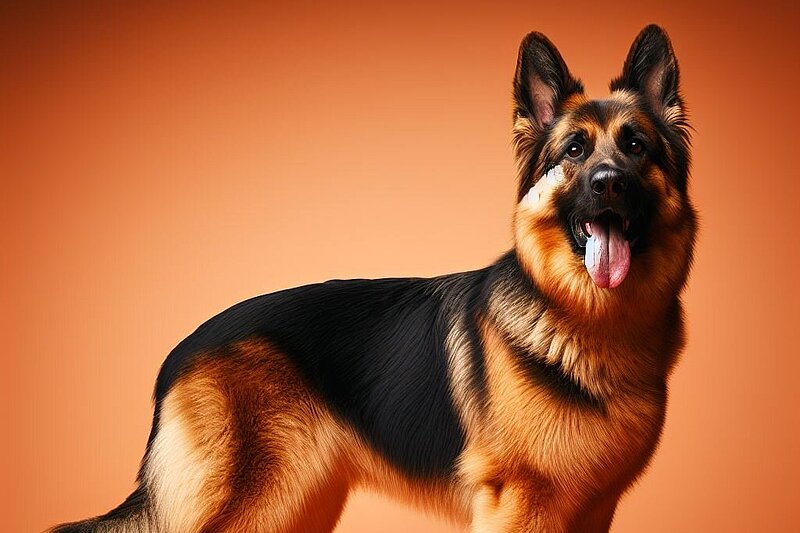German Shepherd Dog: The loyal protector on four paws
The history of the German Shepherd Dog
The origins of the German Shepherd Dog date back to the late 19th century. Max von Stephanitz, a German cavalry officer, is considered the father of the breed. His aim was to breed a working dog that was both intelligent and powerful. In 1899, he introduced the first German Shepherd Dog named Horand von Grafrath. This breed was originally bred for herding, but quickly became a popular choice for police, military and rescue services worldwide.
Who is the German Shepherd suitable for?
A German Shepherd is ideal for active individuals or families who spend a lot of time outdoors. These dogs require both physical and mental exercise. They are not the best choice for people who have little time for training and exercise. However, a well-trained German Shepherd can be a wonderful family dog that gets along well with children and is a loyal protector.
Character: Intelligent and loyal
German Shepherds are known for their high intelligence and ability to learn. They are loyal, courageous and have a strong protective instinct. These dogs are alert and make excellent watchdogs. Their strong need to work and please makes them excellent companions for people who can invest a lot of time and energy in their upbringing and training.
Appearance: A picture of strength and elegance
A German Shepherd is medium to large in size and has a strong, muscular appearance. Their coat is usually dense and can be either short or long. Typical coat colors are black with brown, red or gold markings, all black or shades of grey. The upright ears and straight, strong back are further characteristic features of this breed.
Grooming: What you need to know
Grooming a German Shepherd requires regular brushing, especially during the shedding season. Their dense undercoat can shed a lot of hair, which is why a good vacuum cleaner is a must! Regular dental care, claw care and ear cleaning should also be part of the grooming routine. Bathing is only necessary when needed to preserve the skin's natural oils.
Health: Robust, but not without challenges
German Shepherds are generally hardy, but like many purebred dogs, they are prone to certain genetic health issues. Hip and elbow dysplasia are common problems. Allergies and skin conditions can also occur. A balanced diet and regular veterinary check-ups are important to maintain your dog's health.
Size and weight: an overview
Male German Shepherds reach a shoulder height of 60 to 65 cm and weigh between 30 and 40 kg. Females are slightly smaller, with a shoulder height of 55 to 60 cm and a weight of 22 to 32 kg.
Exercise: Activity is a must
German Shepherds are extremely energetic dogs that need a lot of exercise. Daily walks, playtime and mental challenges are essential. They are not ideally suited to city life unless you have access to large open spaces or a garden. A bored German Shepherd can develop destructive behavior.
Training recommendations: Start early
Early and consistent training is crucial for German Shepherds. Positive reinforcement methods work best. These dogs love to complete tasks, so obedience training, agility and search games are great ways to keep them busy. Good socialization is also important to ensure they get along well with other dogs and people.
Interaction with children and other animals
German Shepherds are usually very good with children, especially if they grow up together. They are patient and protective. However, problems can arise when interacting with other animals if they have not been properly socialized. Early socialization is the key to a harmonious life together.
Recognition by the FCI
The German Shepherd Dog is recognized by the Fédération Cynologique Internationale (FCI) and belongs to Group 1: Herding and driving dogs. This recognition underlines the worldwide importance and popularity of the breed.
